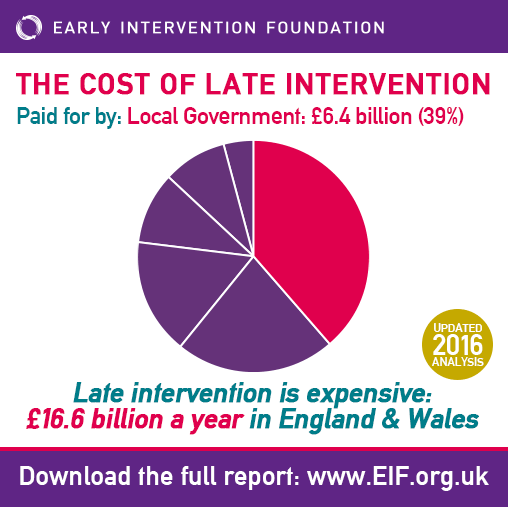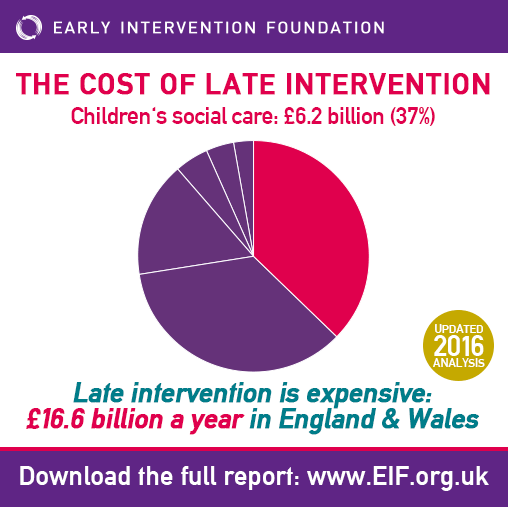EIF report
The cost of late intervention: EIF analysis 2016
This report focuses on the immediate and short-run fiscal costs of what we call ‘late intervention’: the acute, statutory and essential benefits and services that are required when children and young people experience significant difficulties in life, many of which might have been prevented.
Spending on late intervention is an indicator of demand for acute services, such as hospitalisation and incarceration, which tend to be more expensive. EIF aims to increase the use of effective early intervention to help reduce this demand.
Nearly £17 billion per year – equivalent to £287 per person – is spent in England and Wales by the state on the cost of late intervention. This has not fallen since our last report in 2015. While the estimated total is as before, our latest analysis shows that the profile has changed. For example, the cost due to domestic violence has risen, while the cost due to young people who are not in employment, education or training has fallen. Breaking down the costs by issue, department or area allows for more targeted investment, which could lead to a reduction in late intervention spend in future.
Findings
- Nearly £17 billion per year is spent in England and Wales by the state on the cost of late intervention – in line with EIF’s previous estimate. This works out at around £287 per person.
- The largest individual costs are:
- £5.3 billion spent on Looked After Children
- £5.2 billion associated with cases of domestic violence
- £2.7 billion spent on benefits for young people who are not in education, employment or training (NEET).
- The cost of late intervention is spread across different areas of the public sector, with the largest shares borne by:
- local authorities (£6.4 billion)
- the NHS (£3.7 billion)
- DWP (£2.7 billion).
- In education, the total costs of persistent absenteeism and permanent exclusions are both higher than last year’s estimate.
- The amount spent on late intervention varies significantly across England (download data / use interactive map). Using spend per person in each local authority as a basis for comparison, we find that this is £298 on average but can be as low as £164 or as high as £531.
- Using heat maps, we are able to show that the amount of money spent in a local authority on late intervention is, to some extent, linked to the level of deprivation in that area. There is also an urban/rural split: rural areas are more likely to show lower levels of both late intervention spend and deprivation, while urban areas are more likely to show higher levels of both.


